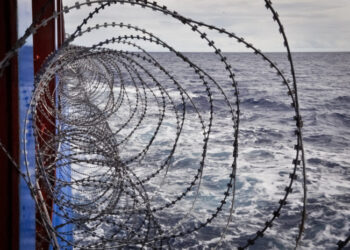The recent attack on a tanker proceeding in the Southern Red Sea on 3 April has reportedly had no impact on the flow of ships in the region or on the working status of Yemeni ports, according to Gard Club’s latest update.
According to US MARAD, the nature of the incident is preliminarily assessed to be a projectile that penetrated the hull of a commercial tanker and caused minor damage above her waterline. As from 6 April, the port condition is as follows:
Working:
- Aden,
- Mukalla,
- Ash Shihr Terminal,
- Nishtun, Saleef
- Hodeidah
Closed:
- Mokha,
- Ras Isa Marine Terminal (Safer),
- Ras Isa Petroleum Products Reception Facility
- Balhaf LNG Terminal
The capacity of all operating ports may, however, be limited, as cranes may be unavailable and there may be a lack of fuel supplies and other basic services. All vessels attempting to enter Yemeni ports must also expect postponements and delays due the special entry conditions in force and multiple inspections carried out by the Saudi Arabian-led coalition.
Port entry conditions
- Shipping companies or owners shipping commercial goods or services to ports not under the direct control of the Government of Yemen must submit a request for clearance together with the required documents to the UN Verification and Inspection Mechanism for Yemen (UNVIM). The clearance application must be submitted upon departure from the port of origin of their cargo and at least five days prior to arrival at the port of destination in Yemen. All bilateral humanitarian assistance (bulk, break-bulk or containerized) destined for Yemen is also subject to UNVIM and must be transhipped through Djibouti port, the location of UNVIM’s Head Office, where it will be off-loaded and screened.
- Vessels calling at ports that are under the control of the Government of Yemen must continue to apply for entry permissions through the Yemeni Ministry of Transportation using the form: Entry permission for commercial and relief ships to Yemeni ports. The form should be completed and sent by email to the Operations Unit of the Supreme Relief Committee at [email protected] no less than a week before the vessel’s entry/arrival.
- Entry to Yemeni territorial waters will be granted only following an inspection by the naval forces of Saudi Arabian-led coalition. Once a vessel reaches the outskirts of Bab-el-Mandeb, some 3nm from Yemen’s territorial waters, a notice of arrival must be called in by the Master on VHF channel 16. The naval forces of the Saudi Arabian-led coalition will then advice where the vessel should anchor pending completion of the inspection and approval of the port entry. Once the vessel is permitted to enter port, the Master must register the vessel’s arrival with the port authorities (on VHF Channel 14 or 16) and will then be assigned an anchoring position until the berthing time is confirmed by the Harbour Master.
Recommendations
Operators calling at Yemeni ports are advised to take note of the above vessel clearance procedures and clarify the security situation and the status of a port’s services well before arrival as availability of cranes, fuel, manpower, etc. may be limited. It is important to make frequent checks with local sources of information, e.g. vessel’s agent, Gard’s correspondent, etc., to obtain the most up to date and reliable security information available at any given time and assess the current security situation prior to entering Yemini waters.
It is also vital to follow guidance on the Interim Guidance on Maritime Security in the Southern Red Sea and Bab al-Mandeb and the BMP4, when operating in the Red Sea and Gulf of Aden region.




























































